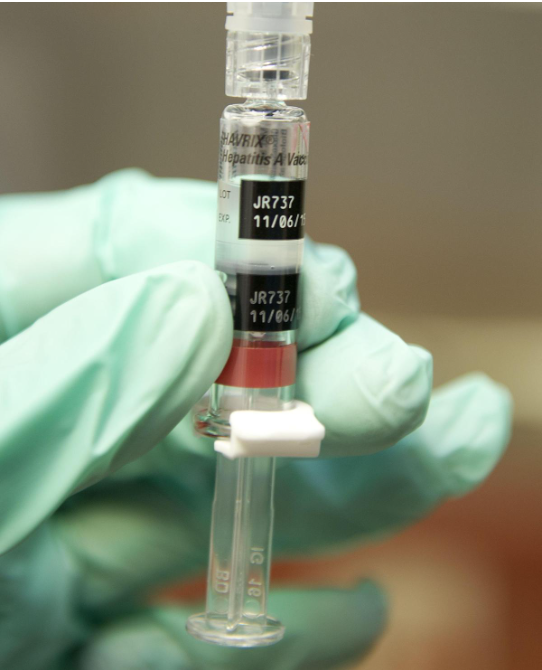Description

Source: IASGYAN
Disclaimer: Copyright infringement not intended.
Context
- Pharma standards body Indian Pharmacopoeia Commission (IPC) has issued a drug safety alert over nimesulide, saying the pill can trigger rashes on the skin (fixed drug eruption).
- It asked consumers and healthcare professionals to closely monitor the use of the drug and report any adverse reaction to the National Coordination Centre-Pharmacovigilance Programme of India of the IPC.
Details
Indian Pharmacopoeia Commission (IPC)
- The Indian Pharmacopoeia Commission (IPC) was formed in 1956 and is headquartered in Ghaziabad, Uttar Pradesh, India.
- Autonomous Institution: Established under the Ministry of Health and Family Welfare, Government of India.
- Standard Setting: Responsible for setting standards for drugs manufactured, sold, and consumed in India.
- Publication: Publishes the Indian Pharmacopoeia (IP), which serves as the official compendium of standards for drugs.
- The Indian Pharmacopoeia Commission (IPC) plays a crucial role in ensuring the quality, safety, and efficacy of drugs manufactured and consumed in India.
Indian Pharmacopoeia (IP)
- Modelled on British Pharmacopoeia: Historically follows from the British Pharmacopoeia, ensuring compatibility with international standards.
- Publication History: IP editions are suffixed with the respective years of publication, e.g., IP 2010, IP 2014, IP 2018.
- Mandatory Drug Labeling: Drugs manufactured in India must be labeled with the non-proprietary drug name suffixed with "I.P.", similar to "B.P." for British Pharmacopoeia and "U.S.P." for United States Pharmacopeia.
History of Publication:
- Initiation: The process of publishing the first Pharmacopoeia began in 1944 under the chairmanship of Col. R. N. Chopra.
- First Publication: The first Indian Pharmacopoeia list was published in 1946 and subsequently put forth for approval.
- Monographs: Descriptions of drug preparations in the Pharmacopoeia are called monographs, providing detailed specifications for identification and quality control.
Significance of Indian Pharmacopoeia:
- Quality Assurance: Ensures the quality, safety, and efficacy of drugs through standardized specifications and testing methods.
- Regulatory Compliance: Provides a legal framework for drug manufacturing and labeling, ensuring compliance with regulatory requirements.
- Consumer Confidence: Enhances consumer confidence by guaranteeing the quality and consistency of pharmaceutical products in the Indian market.
- International Recognition: Aligns with global pharmacopoeial standards, facilitating international acceptance and recognition of Indian drugs and pharmaceutical practices.
About Nimesulide
- Nimesulide is a nonsteroidal anti-inflammatory drug (NSAID) with analgesic, antipyretic, and anti-inflammatory properties.
- It belongs to the class of selective COX-2 inhibitors.
Pharmacological Properties:
- Mechanism of Action: Nimesulide primarily inhibits the enzyme cyclooxygenase-2 (COX-2), which is involved in the synthesis of prostaglandins responsible for inflammation, pain, and fever.
- Selective Inhibition: Unlike traditional NSAIDs, nimesulide selectively inhibits COX-2, thereby reducing inflammation without significant inhibition of COX-1, which helps protect the stomach lining.
- Absorption and Metabolism: Nimesulide is well-absorbed after oral administration, reaching peak plasma concentrations within 2-4 hours. It undergoes extensive hepatic metabolism and is primarily excreted in urine and feces.
Medical Uses:
- Pain Management: Nimesulide is commonly used to relieve acute and chronic pain conditions, including musculoskeletal pain, postoperative pain, and menstrual pain.
- Inflammatory Disorders: It is prescribed for the treatment of various inflammatory conditions such as osteoarthritis, rheumatoid arthritis, and acute gout.
- Fever Reduction: Nimesulide is effective in reducing fever associated with infections and inflammatory conditions.

Side Effects:
- Gastrointestinal Effects: Like other NSAIDs, nimesulide can cause gastrointestinal side effects such as stomach ulcers, bleeding, and perforation, especially with long-term use or in high doses.
- Renal Effects: Prolonged use of nimesulide may lead to kidney damage, renal impairment, and fluid retention.
- Cardiovascular Risks: There have been concerns about the cardiovascular safety of nimesulide, particularly its potential to increase the risk of heart attack and stroke.
- Hepatotoxicity: Rare cases of severe liver damage, including liver failure, have been reported with nimesulide use.
Controversies:
- Hepatotoxicity Concerns: Nimesulide has been associated with cases of severe hepatotoxicity, leading to its withdrawal or restriction in several countries.
- Cardiovascular Risks: Some studies have raised concerns about the cardiovascular safety of nimesulide, prompting regulatory agencies to review its risk-benefit profile.
- Usage Restrictions: Due to safety concerns, nimesulide is not recommended for certain patient populations, including those with liver disease, renal impairment, or a history of cardiovascular events.
Conclusion
By setting and maintaining high standards for drug quality and safety, Indian Pharmacopoeia Commission and the Indian Pharmacopoeia contribute to public health and ensure the reliability of pharmaceutical products in both domestic and international markets. The IP continues to evolve with advancements in pharmaceutical science and technology, reflecting ongoing efforts to enhance drug quality and regulatory compliance.
Must read article:
IASGYAN
Sources:
EconomicTimes
|
PRACTICE QUESTION
Q. The Indian Pharmacopoeia Commission and the Indian Pharmacopoeia play pivotal roles in regulating the pharmaceutical industry in India. Discuss. (250 Words)
|











